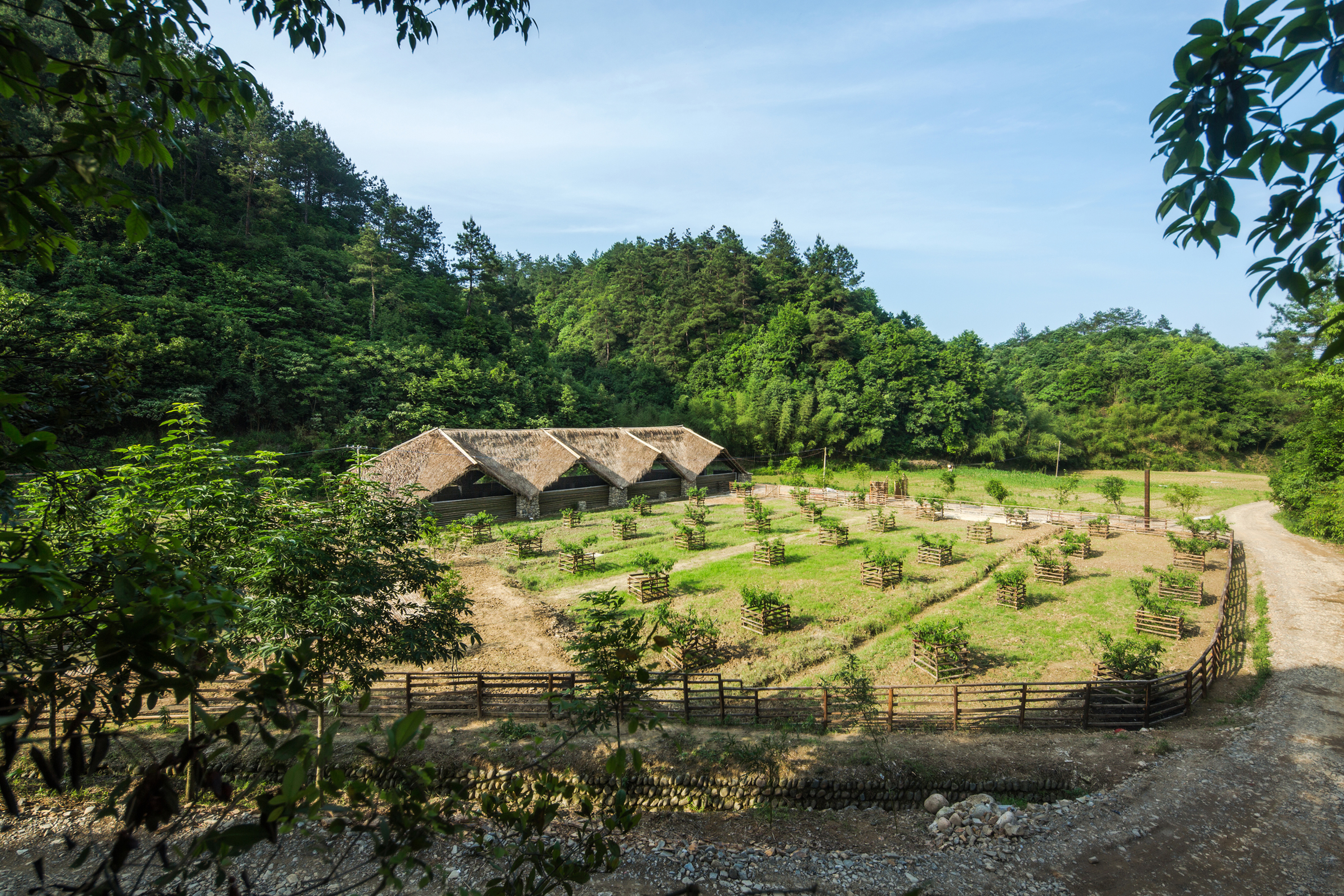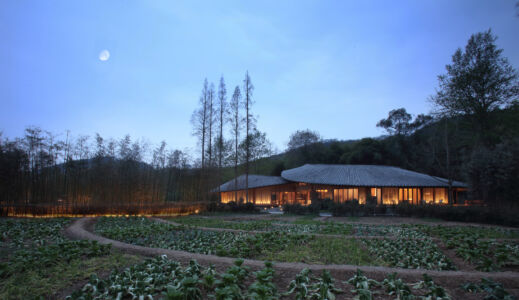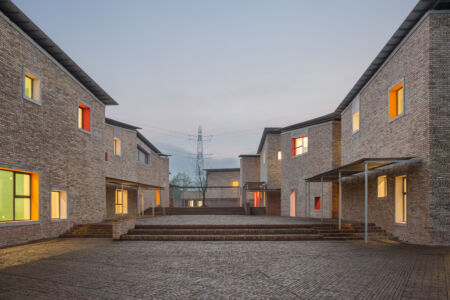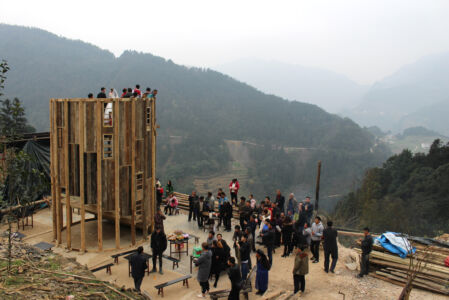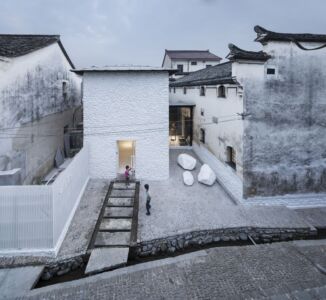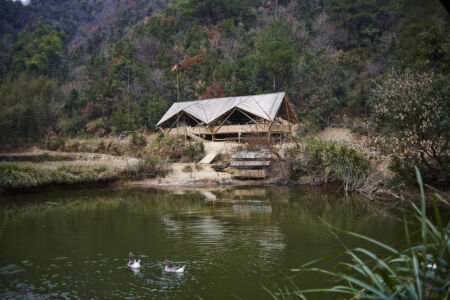 After two decades of building up cities, the People’s Republic of China rediscovers the value of rural life and aims at the countryside as a new frontier for modern architecture. The process is framed by a trend already outlined in the last edition of the Biennale where the values found were those of everyday life. This year with “Building a Future Countryside” the curator Li Xiangning (on the left), teacher of history, theory and criticism at the Tongji University College of Architecture and Urban Planning in Shanghai, a scholar known and active on the international scene, brings the interpretive key to the theme of the Bienniale Freespace in the vast Chinese countryside for rediscover the cultural values of common life.
After two decades of building up cities, the People’s Republic of China rediscovers the value of rural life and aims at the countryside as a new frontier for modern architecture. The process is framed by a trend already outlined in the last edition of the Biennale where the values found were those of everyday life. This year with “Building a Future Countryside” the curator Li Xiangning (on the left), teacher of history, theory and criticism at the Tongji University College of Architecture and Urban Planning in Shanghai, a scholar known and active on the international scene, brings the interpretive key to the theme of the Bienniale Freespace in the vast Chinese countryside for rediscover the cultural values of common life.
Italy and China share a tradition of relations along the centuries. This relation is specially strong between Venice and some regions of China. How do you refer to this long history and what is your personal feeling with Venice?
I think that Chinese people opinion is that Venice is a very important city in Europe and also that Italian people likes Chinese people. I think that there are a lot of things in common that we can enjoy in food and in culture and also we are very friendly to each other. I think also we share a very long history tradition, we have strong cultural connection things in the ancient time, in the renaissance: we have also the stories about Marco Polo. Everybody in China loves Italian culture and also Venice is a symbol of that. Probably you know that Venice is a water city and around Shanghai there are many villages with a lot of canals, this is Chinese Venice. For the professional architects Venice is an important capital of architecture, of culture. In our architectural culture we have Scarpa, we have Tafuri, and in our architecture history books there a lot of examples from Venice since the period of renaissance. In modern time now every architects who want to go to Italy they want visit Venice and also we share the famous architecture schools. We share architecture teachers and architecture schools. In Shanghai we organized together several international conference comparing Italian urbanism and Chinese urbanism and architecture. I think this is a very strong connection and I hope in the future we can strengthen this connection with the Italian architecture society and also the Chinese professional.
What is your approach to the theme proposed by the curators Yvonne Farrell e Shelley McNamara “Freespace”?
My understanding of Freespace after reading the Grafton’s lines about the interpretation of the main theme is that freespace could be two aspect. One is flexibility of use: space can be adapted to new uses and inclusive of other uses, this in the more architectural sense. Also freespaces can be interpreted by the social aspect: a space we hope can include different identity, nationality, cultures, who can share the common space to communicate and to enjoy each others way of life. Starting from those point of view is the reason I proposed my theme in the China pavilion which is the countryside. You know in China, if we are talking to something related to idea of freespace, we have in the countryside the idea of free participation to the construction: everyone can go there and have the chance to participate in the construction. That is countryside. I know that many people, like Rem Koolhas, are turning their eyes to countryside rural construction because they think this is one of the major challenge of the rural built environment and where there are more possibilities to built our future and common spaces. That’s why I propose the countryside construction in China. The countryside is the response to the Grafton’s idea of the freespace.
Can you give us a preview of the China Pavilion in Venice?
In China we think that after the wave of urbanism, after the wave of rapid growth in the city, now countryside and other rural regions are the new frontier of contemporary architecture in China because architects, artists, also developers and also workers, they all join the forces to rebuild community and the communal life and value system in the rural. Because after several decades the connections between the rural and the cities are broken. Many people have leaved the countryside to move to the cities to the during the last several decades. Now people is tired of the traffic jams, the polluted air, by the bad aspect of the urbanism and they turn the eyes to the rural countryside. Not only for better living quality, it’s also a culture value because we are always talking about nostalgia.
If you translate nostalgia into Chinese, literally it means the willing to going back to the countryside. It’s a willing for the past, the past rural life, it’s a kind of image related to the countryside. So now more and more people are turning their eyes to the countryside, at the construction of the rural areas. The young generation would leave the cities and go to the countryside, they wants to live in the countryside. That’s why we think the countryside will transform rapidly in a more culture way and in a more communal way value. We want to rebuilt the cultural value of the rural. That’s why I propose the theme of the Chinese pavilion: in the exhibition structure we focus on six different aspect of the rural, the dwelling, the living, the tourism, the production, the culture and the future. The production because the villages continue to produce. It’s not only tourism but also they continue to produce agriculture and also many productions like coffee and also other aspect: we growth pigs and we produce very healthy food from the countryside. Then we have the other aspects, the culture and the future, the new technology. You know Alibaba is a company who produce a new transportation, facilities and mobility system for the villages. Everything is express delivered to the villages for construction: everyone who wants to build in the villages, they could order materials not in the local market but in a global way. They could order materials from all over the country and everything could be delivered on site in one or two days and construction can be based on that. This is a new kind of system and also we are introducing new advanced technology like 3d printing and the parametric design in the countryside to have a more coherent relation to the environment. So we divide the exhibition in 6 sections each representing one aspect of the rural construction and in each section we have one major architect with one or two a major installation to represent symbolic project. So in total we have around 20 or 25 projects we present in China. In the courtyard outside the China pavilion we’ll have a 3d printing of a village pavilion in the countryside. After the exhibition it will be brought back to China and installed in one of the village square so it will be in the public space of the village. We’ll try to recreate a pavilion representing the entrance of a village in Venice and after that the pavilion will be brought back in China. The pavilion is the gathering space and resting space for the general public and also for the opening events. It will be printed in real scale one to one: it’s almost 3 meters high and 15 to 20 meters long, it’s a kind of curved pathway where you can seat and enjoy the space created by the pavilion.
What are your expectations regarding the discussion with other countries about the theme proposed by Yvonne Farrell e Shelley McNamara “Freespace”?
I think that in the future people can talk through this Venice Biennale. People can pay more attention to another interpretation angle of public space which is freespace, turned not in a space of architect creation, but also in a free partecipation, in a free enjoying of life. We hope that from different countries are coming of course different experiences and different knowledges about how to create different types of freespace where people can meet and enjoy each others. They will bring example of freespace and they will share their knowledges and also their future visions about how to create better future freespace for all of us in the world. This is one of the responsibility that Venice Biennale could carry and this is the information that Venice Biennale could bring to all the professional architect around the world.
Cover photo: Chen Haoru_ Pig Barn of the Taiyang Organic Farming Commune ®Lu Hengzhong. Courtesy Pavilion of China at the 16th Venice Architecture Exhibition, La Biennale di Venezia
About Author
Tag
Freespace
Last modified: 4 Aprile 2018


